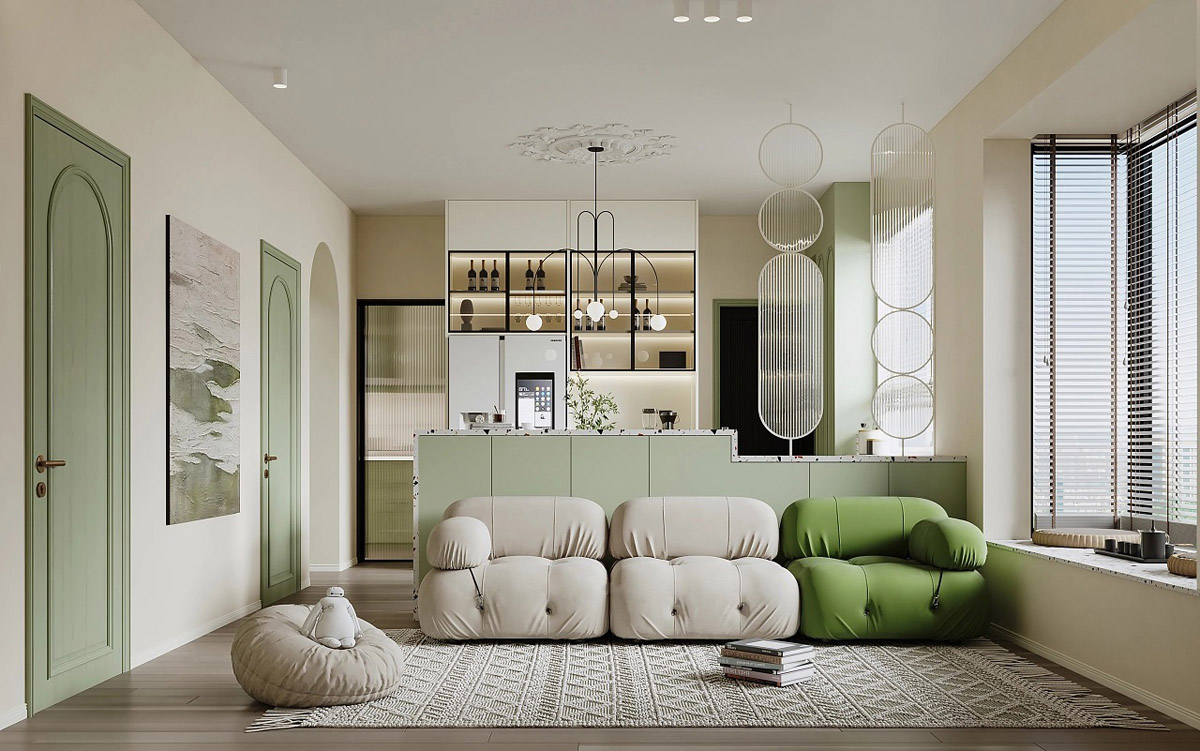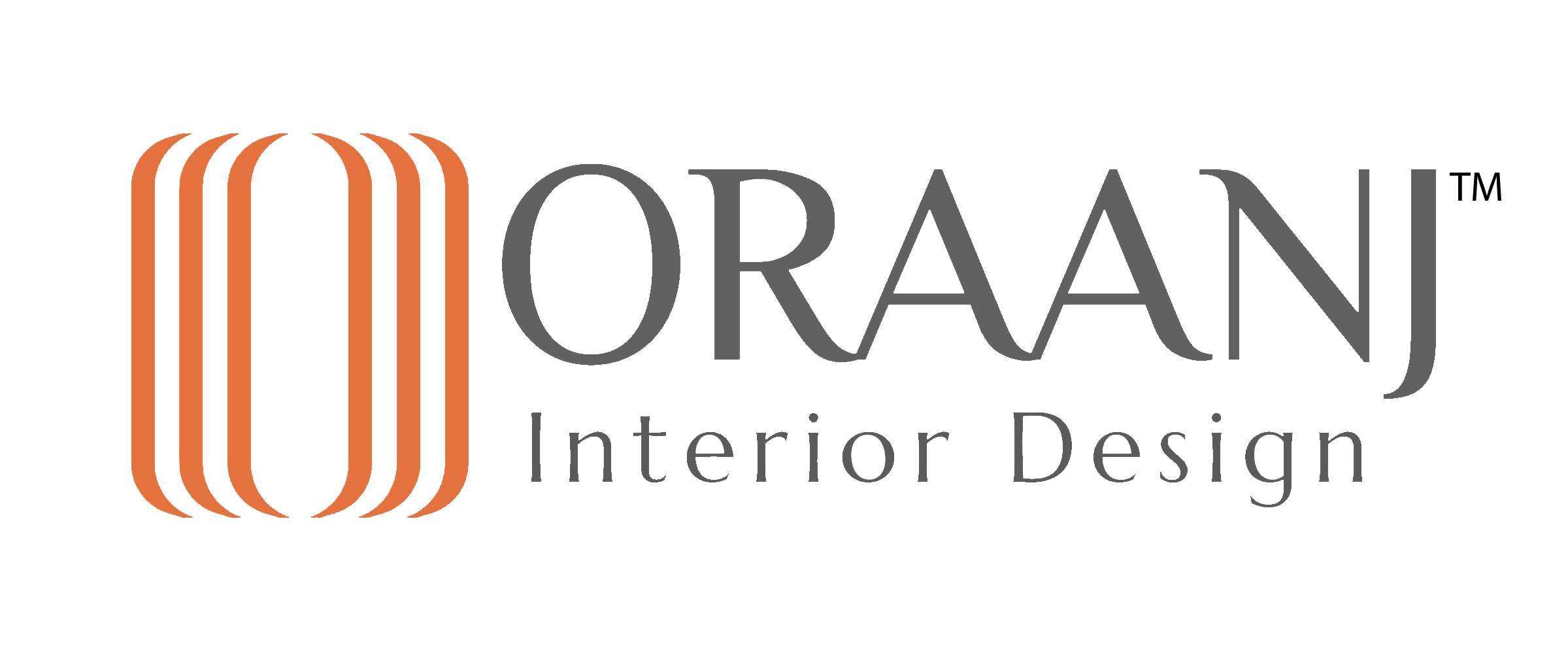Difference an Interior Designer Bring to Your Space
Difference an Interior Designer Bring to Your Space
" I find that the harder I work, the more luck I seem to have it."
-Thomas Jefferson
The interior layout of an office is a critical element in shaping the identity and perception of a business. A well-planned and organized office space can exert a profound influence on employees and visitors, ultimately affecting an organization's ability to attract and retain top talent and convey a professional image to prospective clients.
Interior designers play a pivotal role in crafting these adequate office spaces. They bring their expertise in spatial planning, aesthetics, and functionality to create environments that align with a company's brand, values, and goals. Collaborating with skilled interior designers can help businesses maximize the potential of their workspace, creating a positive and productive atmosphere that enhances both employee satisfaction and client impressions.
One of the most significant ways the interior of an office defines a company is by serving as a visual representation of its brand and values. The color schemes, furniture, and decor should harmonize with the company's identity, be it modern and innovative, traditional and reliable, or creative and dynamic. This design alignment reinforces the brand message, making it more tangible and relatable for employees and visitors. It can create a sense of belonging and shared values among employees, promoting a strong organizational culture.

Functionality and comfort are paramount in a well-defined office layout. A workspace that is thoughtfully designed with the needs of employees in mind can significantly enhance their productivity and well-being. Ergonomic furniture, spacious workstations, and designated collaboration areas foster a positive work environment, leading to increased job satisfaction and reduced turnover. Employees who feel comfortable and supported in their workspace are more likely to be motivated and engaged, positively impacting the company's performance.
Reflects the Company’s Values and Culture
The interior layout of an office is a crucial component in defining the identity and perception of a business. It goes beyond aesthetics; it's a powerful tool that can influence the way employees work and how the company is perceived by both its workforce and external stakeholders. Great interior designs can transform a workspace into an environment that not only reflects a company's values and culture but also fosters productivity, creativity, and employee well-being, making it an essential aspect of modern workplace strategy.
First and foremost, the office interior is a visual representation of the company's brand and values. The color schemes, furniture choices, and decor must align with the organization's identity, whether it's a forward-thinking, innovative tech firm, a traditional and reliable financial institution, or a creative and dynamic marketing agency. This alignment serves to reinforce the brand's message, making it tangible and relatable to everyone who steps through the office doors. It fosters a sense of belonging and shared values among employees, contributing to a strong organizational culture that can be a driving force behind success.
The functionality and comfort of the office space are equally vital. A well-planned layout that considers the needs of employees can greatly enhance productivity and well-being. Ergonomic furniture, spacious workstations, and well-defined collaboration areas create a positive work environment that leads to increased job satisfaction and reduced turnover. Happy, comfortable employees are more likely to be motivated and engaged, which has a direct and positive impact on the company's overall performance.
Furthermore, the office's interior design also influences the perceptions of visitors. A professional and organized office space conveys a strong message about the company's competence, credibility, and commitment to excellence. It signals attention to detail and a customer-centric focus, which can be a critical factor for potential clients and partners when they are considering whether to engage with the company.
Boosts Employee Morale and Productivity
The interior of an office plays a crucial role in shaping the well-being and efficiency of its employees. It is widely acknowledged that a comfortable and functional workspace can significantly enhance morale and productivity. Achieving this requires a thoughtful and well-planned office design.
Employee comfort is at the core of a well-designed office. This entails considering the layout and furniture choices carefully. Ergonomic chairs and desks are essential to promote good posture and prevent physical discomfort, which can lead to reduced productivity and job satisfaction. Proper lighting is equally important, as it not only reduces eye strain but also sets the ambiance for the workspace. A well-illuminated office fosters a sense of alertness and focus among employees.
In addition to ergonomic considerations, a well-designed office also takes into account the need for spaces that support relaxation and rejuvenation. Areas like break rooms or lounge spaces are indispensable, allowing employees to take short breaks, recharge, and socialize, which can contribute to improved mental health and overall job satisfaction.
Beyond comfort, the layout and aesthetics of the workplace can have a profound impact on creativity and innovative thinking. Natural light and vibrant colors can stimulate creative thought processes, encouraging employees to think outside the box. Incorporating natural elements like plants can not only enhance the office's aesthetic appeal but also create a calming atmosphere, reducing stress and fostering a sense of peace and well-being. Employees in such an environment are more likely to be innovative, and their enhanced mental health and reduced stress levels can contribute to higher productivity.

Creates a Professional Image for Clients and Visitors
The interior design of an office holds a crucial role in shaping the professional image it conveys to clients and visitors. This image is instrumental in building confidence and credibility, which are essential when establishing relationships with potential clients. A well-designed office that exudes professionalism and knowledge can go a long way in making this happen.
The initial impression that an office imparts on visitors often begins with the reception area. This is the first point of contact where clients and guests interact with the workspace, and it should be meticulously designed to create a lasting positive impression. A well-lit reception area, for instance, instantly exudes warmth and hospitality, making visitors feel welcome and at ease. Comfortable seating in this space reinforces the idea that the company values the comfort of its clients. A clear reception desk, easily navigable and staffed by friendly and efficient receptionists, communicates professionalism and attentiveness.
The reception area is not just a physical space; it's a statement about the company's commitment to excellence and its respect for those it serves. Visitors who walk into a well-designed reception area perceive the company as organized, reliable, and caring. This initial positive impression can set the tone for the entire client relationship.
Crucially, the interior design of the office should align with the company's brand and values. The physical space should reflect the organization's identity, culture, and mission. For instance, if the company’s brand is built on being modern and innovative, the office design must mirror these qualities. This could involve choosing contemporary furniture that exudes a sleek, forward-thinking aesthetic. The integration of cutting-edge technology throughout the workspace not only enhances efficiency but also signifies the company's commitment to staying at the forefront of its industry.

Beyond just aesthetics, the layout of the office also impacts the functionality and productivity of the workforce. Well-designed workspaces consider factors like ergonomics, accessibility, and efficiency. These considerations play a role in not only employee comfort but also their performance. A comfortable and ergonomic workspace can lead to improved job satisfaction and higher productivity.
Collaboration areas should be designed to provide employees with a comfortable and functional space to work together. This includes spaces for brainstorming, collaboration, and group meetings. An office layout that encourages teamwork and open communication can foster creativity and innovation. Employees are more likely to share ideas, brainstorm, and work together effectively in a space that is designed to support collaboration.
In conclusion, the interior of your office can define your organization in many ways. From reflecting your company’s values and culture to creating a professional image for clients, the design elements of your office can make a significant impact on your employees and visitors alike. By investing in a well-designed office, you can create a positive work environment that boosts employee morale and productivity, while also projecting a professional image to potential clients.
Ultimately, a thoughtfully designed office space is a powerful tool for businesses. It not only contributes to client trust and employee satisfaction but can also be a key differentiator in a competitive market. Whether it's the welcoming reception area, the alignment with the company's brand, or the promotion of collaboration, the interior design of an office plays a pivotal role in shaping the perception of the organization and the experiences of those who interact with it. In the modern business world, where first impressions are crucial, the interior design of your office can make a world of difference.
Encourages Collaboration & Communication
The interior design of an office plays a pivotal role in shaping the work environment, impacting not only the aesthetics but also the functionality and interactions within the space. One of the key aspects of office interior design is its ability to encourage collaboration and communication among employees.
An open-plan office layout, for example, is a popular design choice that fosters interaction. Such a layout provides employees with a communal workspace where they can easily interact and communicate. This open environment often leads to increased collaboration as employees are more accessible to one another, fostering the sharing of ideas and knowledge. This can result in a dynamic, innovative, and creative work atmosphere where employees feel engaged and motivated to work together to achieve common goals.
To further enhance collaboration, it's important to incorporate dedicated collaboration areas into the office design. These spaces should be meticulously planned to offer comfort and functionality for group work. Design elements such as flexible furniture arrangements, whiteboards, and multimedia equipment can transform these areas into ideal spaces for brainstorming, collaborative projects, and group meetings. When designed effectively, these spaces become hubs for creative thinking and problem-solving.

In summary, the interior design of an office goes beyond aesthetics; it can define an organization in numerous ways. It reflects the company's values and culture, creating a unique identity that resonates with employees and visitors. Moreover, a well-designed office contributes to a positive work environment, boosting employee morale and productivity. This, in turn, projects a professional image to potential clients, showing that the company is forward-thinking and values its employees' well-being. In today's competitive business world, a thoughtfully designed office space can be a strategic advantage, positively impacting both internal and external perceptions of the organization.
For businesses in London looking to transform their office spaces into a reflection of their values and culture, working with experienced interior designers in London can be a valuable step. These professionals bring expertise and local insights to create bespoke office environments that resonate with the organization's vision and goals, ensuring that the workplace not only looks impressive but also functions optimally for the benefit of both employees and clients.
Author:- Jhanvi Patel and Gunjan Khemka (Interior Designer)

A truly talented interior designers company! Loved the balance of functionality and modern aesthetics.
ReplyDelete